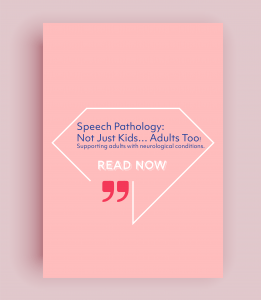Everything You Need to Know About Home and Living with the NDIS
Under the NDIS, participants can receive funding to cover the costs to support their Home and Living, which can be used for the support needs, modification or construction, of an accessible home. Whilst the amount of funding a participant receives differs from person-to-person depending on their individual needs and circumstances, it is important to understand what Home and Living options are available for participants and what they involve.
The NDIS provide three main types of NDIS Home and Living options, which include:
- Specialist Disability Accommodation
- Supported Independent Living
- Individualised Living Options
NDIS can also provide shorter term options, including Short Term Accommodation (STA) and Medium Term Accommodation (MTA).
Let’s look at each of these in more detail.
Specialist Disability Accommodation (SDA)
SDA refers to the accommodation that is tailored for individuals that have specific environmental needs in their home. It provides participants a safe and comfortable home that meets their individual needs and provides them opportunities to live independently and participate in their local community.
SDA is typically a very tailored and unique option other types of disability housing as it includes special features and modifications to meet individual participant’s needs. NDIS have set specific guidelines and criteria for the design of each type of SDA. NDIS estimates that only 6% of the disability population who receives NDIS funding are eligible for SDA, where a participant can live alone or share their home with others.
Some of the features that may be included in SDA are:
- Design Types: Improved Liveability, Fully Accessible, High Physical Support and Robust.
- Building Type: House, unit, complex, townhouse, group home, apartment – to accommodate the needs, goals and circumstances of the participant, in line with NDIS operational guidelines.
- Location: SDA properties are often located close by to essential services such as healthcare facilities, public transport, and community support services.
Why is SDA a good option for NDIS participants?
By having access to disability housing that is tailored to their needs, participants can focus on achieving their goals, feeling more independent, and participating within the community. It also will provide a more accessible home, which may look like height adjustable benches for wheelchair users or reinforced walls for individuals who struggle with emotions.
Additionally, a benefit of SDA is that it can provide participants more stability and security, as many people with high needs experience difficulties in finding suitable accommodation and may move homes more frequently due to changes in their support needs or lack of accessible housing options. SDA provides participants a more stable housing option that can help reduce the stress of participants and can improve their wellbeing.
Supported Independent Living (SIL)
Supported Independent Living (SIL) is a 24 hour support model and is typically shared with others, which means this is the right option for you if you would like to live with others.
SIL is designed to provide support for people with disabilities who want to live independently, and provides a range of support services to assist participants with their daily living tasks whilst also maintaining their independence.
SIL can be provided across a variety of settings, which includes:
- Group Homes
- Shared accommodation
- Individual units
Some of the services that can be provided with SIL include:
- Personal care – Assistance with bathing, dressing, and grooming.
- Household tasks – Assistance with cleaning, cooking and laundry.
- Community participation – Support to participate in community activities such as social groups or sporting events.
- Health and wellbeing – Support to access healthcare services and manage social and emotional support.
- Overnight support – Support to access care needs, which occur overnight.
Why is SIL a good option for NDIS participants?
SIL is a good option for participant’s who want to live independently, but still require support to manage their daily living tasks. By having access to support services to assist with their daily living, participants can develop their skills and confidence and become more self-sufficient over time. Because of this, SIL can provide a more flexible and person-centred approach to supporting participants, as individuals can choose the level and type of support they require to suit their individual preferences.
Additionally, SIL can also provide participants a sense of community and social connection, as living in shared accommodation or group homes can provide participant’s opportunities to develop relationships and participate in social activities with others.
Independent living options (ILO)
Individualised Living Options (ILO) is a Home and Living option where participants can share their home with housemates, or participants could even live in the home of a host. This Home and Living option supports participants to live the way that suits them.
ILO supports work with other NDIS funded supports and services participants receive as well as the help them may get from other informal supports, such as family, friends or in the community.
Short Term Accommodation (STA)
Short Term Accommodation (STA) is a type of accommodation that provides participants temporary housing and support for individuals with disabilities who need a short-term break from their usual living arrangements.
STA can be provided in a variety of settings, such as hotels, apartments, and other temporary accommodations, with support services as listed above under SIL:
- Personal care
- Household tasks
- Community participation
- Health and wellbeing
Why is STA a good option for NDIS participants?
This type of accommodation is a great option for participants who require short-term support like respite due to changes in their support needs, or for those who require respite care. It is also a safe and secure option that meets participant’s needs as it is a flexible and person-centred approach to support.
Additionally, STA can also provide a break for carers to allow them to take time off to recharge, whilst knowing that their participant is receiving the support they need.
STA can also provide opportunities for participants to develop new skills and experiences, participate in new activities, and meet new people which can build confidence and improve participants overall wellbeing. NDIS typically funds 30 days per year for this, and it can be used in one chunk, or weeks/weekends at a time.
Medium Term Accommodation (MTA)
Medium Term Accommodation (MTA) is a Living and Housing option funded by the NDIS so participants have somewhere to live if they cannot move into their long term home due to the disability supports not being ready. The NDIS usually fund MTA for up to 90 days. To be eligible for MTA participants must have a home they will be moving into. MTA is not a standalone support, and is only included in NDIS plans as part of participants other Home and Living support needs.
How can NDIS participants access Home and Living options?
To access Home and Living supports under the NDIS, participants must first go through an assessment process to determine their eligibility and the level of support they require. The assessment process involves a thorough evaluation of the participants needs, circumstances and goals. The amount of funding a person receives will depend on their individual needs and circumstances.
To learn more about NDIS Home and Living options, and the assessment process for NDIS Home and Living options, please visit the NDIS website here.
How can an Occupational Therapist assist with Home and Living assessments?
An Occupational Therapist (OT) will come to your home to complete the assessment required to determine your eligibility for Home and Living options and the level of support that you require. The OT may ask you some set questions, but may also ask you to show them how you complete certain tasks in your home and discuss the support you may require. The OT will work collaboratively with you to achieve your goals.
Contact National 360
Our team love to assist participants become more independent and develop their skills through Home and Living options. If you would like to enquire about our Home and Living Occupational Therapy services, please get in touch with our team using the details below.
1300 340 440
info@national360.com.au
Complete a NDIS referral form here.



